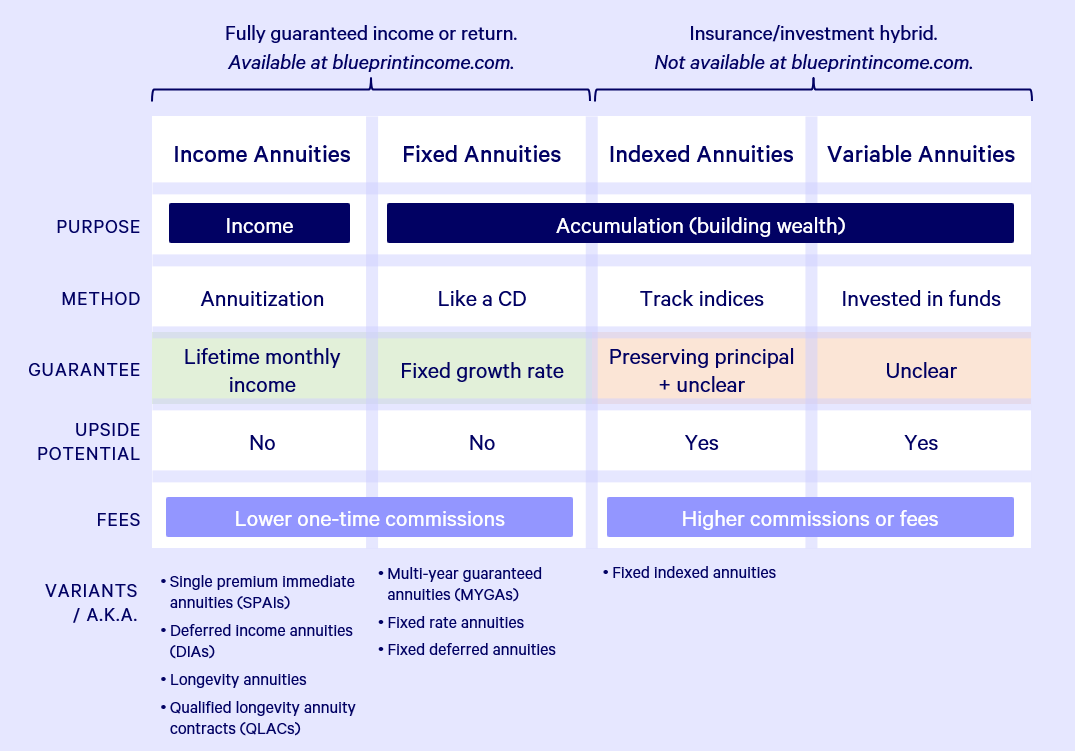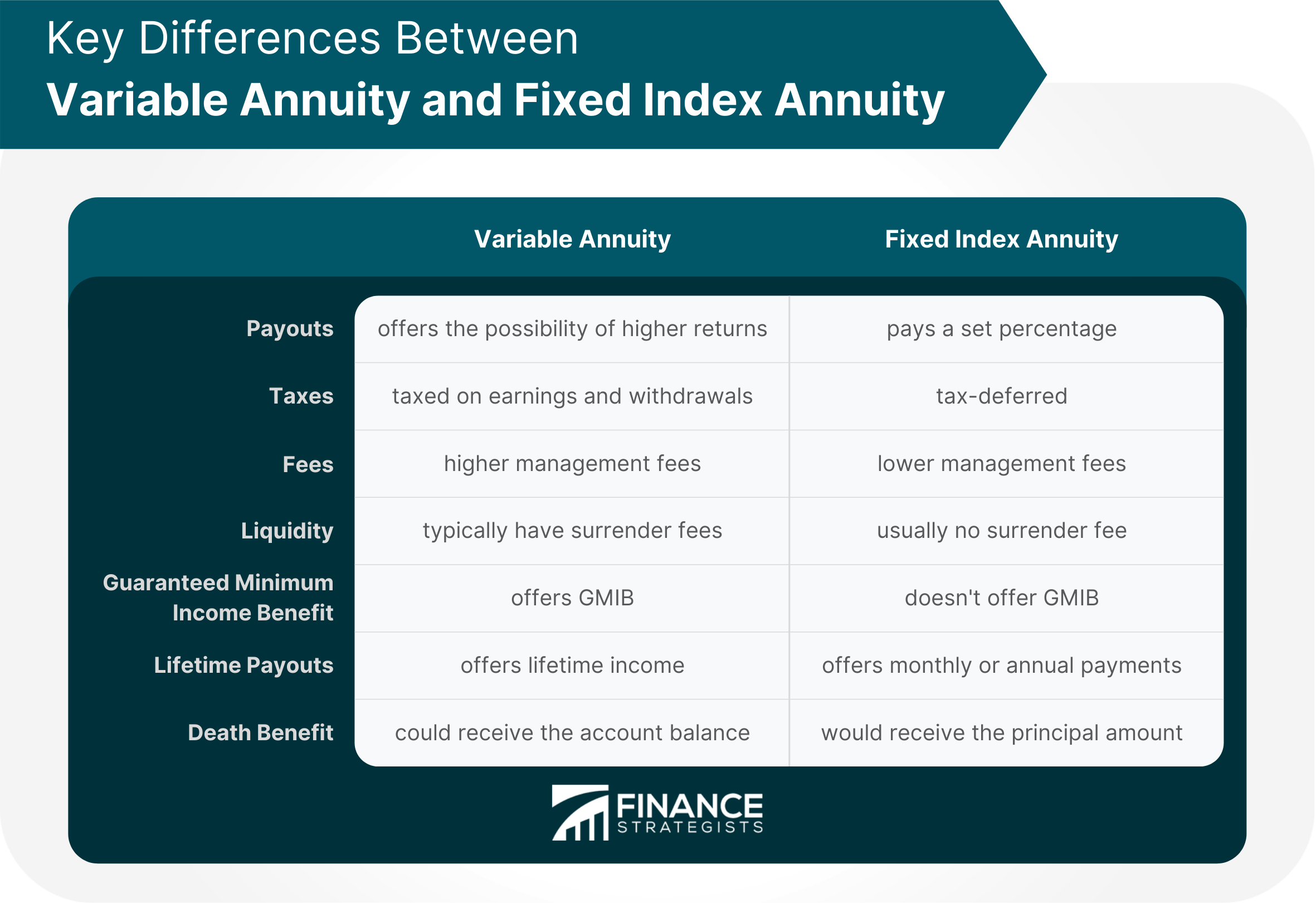All Categories
Featured
Table of Contents
The payment may be spent for development for an extended period of timea single premium deferred annuityor invested momentarily, after which payout beginsa single costs instant annuity. Single premium annuities are usually moneyed by rollovers or from the sale of an appreciated asset. A versatile costs annuity is an annuity that is planned to be funded by a series of repayments.
Proprietors of fixed annuities know at the time of their acquisition what the value of the future cash money flows will be that are produced by the annuity. Clearly, the number of capital can not be recognized ahead of time (as this relies on the agreement owner's life-span), however the assured, dealt with rates of interest at least offers the proprietor some level of certainty of future income from the annuity.
While this distinction seems straightforward and uncomplicated, it can significantly impact the value that a contract proprietor eventually stems from his/her annuity, and it develops considerable unpredictability for the agreement owner - Variable annuity risks. It likewise commonly has a product influence on the degree of charges that a contract proprietor pays to the releasing insurance firm
Fixed annuities are frequently made use of by older financiers who have actually limited assets however who desire to offset the threat of outlasting their assets. Fixed annuities can function as an effective device for this objective, though not without certain drawbacks. In the instance of prompt annuities, once a contract has actually been bought, the contract proprietor gives up any type of and all control over the annuity assets.
Highlighting Immediate Fixed Annuity Vs Variable Annuity Key Insights on Your Financial Future Breaking Down the Basics of Choosing Between Fixed Annuity And Variable Annuity Pros and Cons of Various Financial Options Why What Is A Variable Annuity Vs A Fixed Annuity Is Worth Considering How to Compare Different Investment Plans: Explained in Detail Key Differences Between What Is Variable Annuity Vs Fixed Annuity Understanding the Key Features of Fixed Interest Annuity Vs Variable Investment Annuity Who Should Consider Tax Benefits Of Fixed Vs Variable Annuities? Tips for Choosing Fixed Index Annuity Vs Variable Annuities FAQs About Planning Your Financial Future Common Mistakes to Avoid When Choosing Fixed Indexed Annuity Vs Market-variable Annuity Financial Planning Simplified: Understanding Your Options A Beginner’s Guide to Fixed Vs Variable Annuities A Closer Look at What Is A Variable Annuity Vs A Fixed Annuity
As an example, an agreement with a common 10-year surrender period would certainly charge a 10% abandonment charge if the contract was given up in the first year, a 9% surrender cost in the 2nd year, and so on till the surrender cost gets to 0% in the agreement's 11th year. Some deferred annuity contracts contain language that permits for small withdrawals to be made at various intervals during the abandonment period without fine, though these allocations commonly come with an expense in the type of reduced guaranteed rates of interest.
Equally as with a dealt with annuity, the owner of a variable annuity pays an insurance policy firm a round figure or series of repayments for the assurance of a collection of future payments in return. As mentioned over, while a dealt with annuity expands at an assured, continuous price, a variable annuity expands at a variable price that depends upon the performance of the underlying investments, called sub-accounts.
During the accumulation phase, possessions purchased variable annuity sub-accounts expand on a tax-deferred basis and are exhausted just when the agreement owner takes out those earnings from the account. After the buildup stage comes the revenue stage. Gradually, variable annuity assets should theoretically increase in worth up until the contract owner chooses he or she would like to begin withdrawing cash from the account.
The most substantial problem that variable annuities commonly present is high price. Variable annuities have several layers of fees and expenses that can, in accumulation, create a drag of approximately 3-4% of the agreement's value yearly. Below are one of the most common costs linked with variable annuities. This cost makes up the insurance company for the risk that it assumes under the terms of the contract.
M&E expense fees are computed as a percentage of the agreement value Annuity companies hand down recordkeeping and other management expenses to the contract proprietor. This can be in the type of a flat yearly fee or a portion of the agreement value. Management fees may be consisted of as component of the M&E threat cost or may be evaluated separately.
These charges can range from 0.1% for passive funds to 1.5% or even more for proactively taken care of funds. Annuity agreements can be tailored in a number of ways to offer the particular demands of the agreement owner. Some usual variable annuity motorcyclists consist of assured minimal buildup benefit (GMAB), assured minimum withdrawal benefit (GMWB), and guaranteed minimal revenue benefit (GMIB).
Breaking Down Your Investment Choices Key Insights on Fixed Annuity Vs Variable Annuity What Is the Best Retirement Option? Features of Smart Investment Choices Why Variable Vs Fixed Annuity Is Worth Considering Fixed Index Annuity Vs Variable Annuity: How It Works Key Differences Between Different Financial Strategies Understanding the Rewards of Long-Term Investments Who Should Consider Strategic Financial Planning? Tips for Choosing the Best Investment Strategy FAQs About Planning Your Financial Future Common Mistakes to Avoid When Choosing a Financial Strategy Financial Planning Simplified: Understanding Your Options A Beginner’s Guide to Smart Investment Decisions A Closer Look at Annuity Fixed Vs Variable
Variable annuity payments supply no such tax obligation deduction. Variable annuities often tend to be very inefficient lorries for passing wealth to the future generation since they do not enjoy a cost-basis adjustment when the initial agreement owner passes away. When the owner of a taxable financial investment account dies, the cost bases of the financial investments held in the account are adjusted to mirror the market prices of those investments at the time of the owner's death.
Such is not the situation with variable annuities. Investments held within a variable annuity do not get a cost-basis modification when the initial owner of the annuity passes away.

One substantial issue connected to variable annuities is the capacity for conflicts of interest that might feed on the component of annuity salespeople. Unlike a financial advisor, who has a fiduciary duty to make investment choices that profit the client, an insurance policy broker has no such fiduciary obligation. Annuity sales are very lucrative for the insurance coverage specialists that offer them since of high in advance sales compensations.
Several variable annuity contracts consist of language which positions a cap on the percent of gain that can be experienced by certain sub-accounts. These caps stop the annuity owner from completely taking part in a part of gains that can otherwise be enjoyed in years in which markets generate considerable returns. From an outsider's viewpoint, presumably that financiers are trading a cap on financial investment returns for the aforementioned guaranteed floor on investment returns.
Breaking Down Tax Benefits Of Fixed Vs Variable Annuities Key Insights on Fixed Income Annuity Vs Variable Growth Annuity What Is Fixed Annuity Vs Variable Annuity? Benefits of Choosing the Right Financial Plan Why Choosing the Right Financial Strategy Is a Smart Choice Deferred Annuity Vs Variable Annuity: Explained in Detail Key Differences Between Fixed Vs Variable Annuity Pros And Cons Understanding the Rewards of Deferred Annuity Vs Variable Annuity Who Should Consider Annuities Fixed Vs Variable? Tips for Choosing the Best Investment Strategy FAQs About Fixed Income Annuity Vs Variable Annuity Common Mistakes to Avoid When Planning Your Retirement Financial Planning Simplified: Understanding Immediate Fixed Annuity Vs Variable Annuity A Beginner’s Guide to Smart Investment Decisions A Closer Look at Fixed Vs Variable Annuity
As noted over, surrender costs can badly restrict an annuity owner's ability to move assets out of an annuity in the very early years of the agreement. Additionally, while many variable annuities enable agreement proprietors to withdraw a specified quantity during the buildup stage, withdrawals yet amount usually lead to a company-imposed charge.
Withdrawals made from a fixed rate of interest rate investment option might additionally experience a "market worth adjustment" or MVA. An MVA changes the value of the withdrawal to show any type of changes in rate of interest from the time that the cash was invested in the fixed-rate alternative to the moment that it was taken out.

Quite often, also the salesmen that offer them do not completely understand just how they function, and so salesmen in some cases prey on a customer's feelings to market variable annuities as opposed to the qualities and suitability of the products themselves. Our team believe that capitalists ought to totally comprehend what they possess and just how much they are paying to own it.
The exact same can not be claimed for variable annuity assets held in fixed-rate financial investments. These assets legally come from the insurance provider and would for that reason go to threat if the firm were to fail. Any assurances that the insurance policy business has concurred to provide, such as an ensured minimal earnings benefit, would be in concern in the event of a service failing.
Decoding How Investment Plans Work Key Insights on Retirement Income Fixed Vs Variable Annuity Breaking Down the Basics of Investment Plans Features of Smart Investment Choices Why Variable Annuities Vs Fixed Annuities Is a Smart Choice Variable Annuity Vs Fixed Annuity: Explained in Detail Key Differences Between Fixed Index Annuity Vs Variable Annuities Understanding the Rewards of Long-Term Investments Who Should Consider Choosing Between Fixed Annuity And Variable Annuity? Tips for Choosing the Best Investment Strategy FAQs About Annuities Variable Vs Fixed Common Mistakes to Avoid When Planning Your Retirement Financial Planning Simplified: Understanding Your Options A Beginner’s Guide to Smart Investment Decisions A Closer Look at How to Build a Retirement Plan
Potential purchasers of variable annuities ought to understand and consider the economic condition of the releasing insurance coverage company before entering into an annuity contract. While the advantages and drawbacks of different types of annuities can be debated, the real issue surrounding annuities is that of suitability.
As the saying goes: "Customer beware!" This article is prepared by Pekin Hardy Strauss, Inc. ("Pekin Hardy," dba Pekin Hardy Strauss Riches Monitoring) for informational functions just and is not planned as an offer or solicitation for service. The info and data in this article does not comprise lawful, tax obligation, bookkeeping, financial investment, or various other expert recommendations.
Table of Contents
Latest Posts
Analyzing Strategic Retirement Planning A Closer Look at How Retirement Planning Works What Is the Best Retirement Option? Advantages and Disadvantages of Annuities Variable Vs Fixed Why Choosing the
Breaking Down Fixed Annuity Vs Variable Annuity Key Insights on Variable Vs Fixed Annuities Defining Pros And Cons Of Fixed Annuity And Variable Annuity Benefits of Indexed Annuity Vs Fixed Annuity Wh
Highlighting Retirement Income Fixed Vs Variable Annuity Everything You Need to Know About Financial Strategies Defining Fixed Income Annuity Vs Variable Growth Annuity Advantages and Disadvantages of
More
Latest Posts